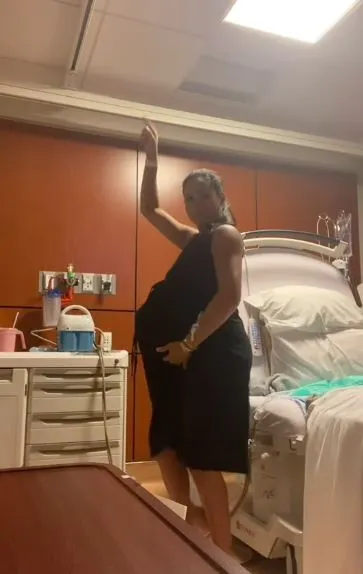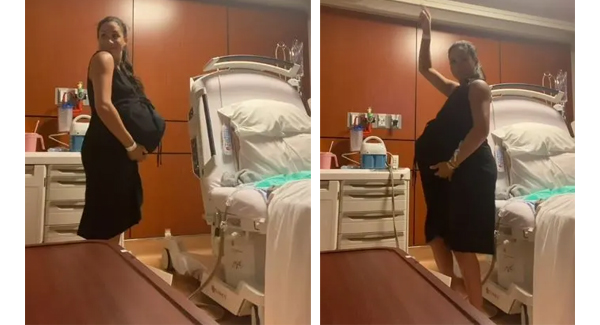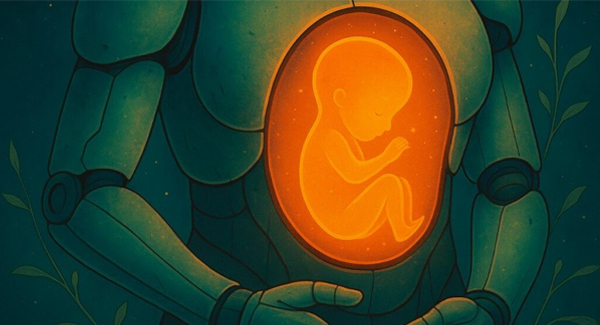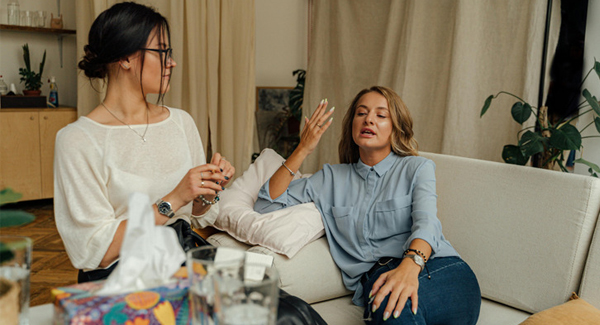After Meghan Markle revealed she tried dancing to bring on labour, we share other things that are worth a try below
MEGHAN Markle’s baby bump has been one of the most talked about topics this week.
Although crazy conspiracy theorists have called it a hoax, professionals explain that every pregnant bump is unique and that it’s perfectly natural, regardless of how big or small, high or low, wide or pointy it is.

Meghan, 43, shared a video of herself and Prince Harry twerking in a hospital room in 2021 in an attempt to induce labor on Instagram to celebrate the fourth birthday of their daughter, Princess Lilibet.
Meghan may have uploaded the video to dispel rumors that she donned a prosthetic “moonbump,” or artificial pregnant tummy, to conceal her pregnancy.
But the clip has only further fuelled claims from conspiracy theorists, who have questioned whether the baby bump is real.
Some have claimed her bump was too high or the wrong shape, and that her ability to dance in that way at nine months meant she was either “superhuman” or not pregnant at all.
Other online trolls wrote that the bump moves strangely as she dances, and that dancing wouldn’t be possible at all at full-term.
However, what do experts make of it?
According to Pip Davies, an NHS midwife and co-founder of the Midwife Pip Podcast (@midwife_pip), it’s quite common for baby bumps to appear in a variety of shapes and sizes, especially as pregnancy draws to a close.
She explained: “Everybody carries differently, and factors like muscle tone, baby’s position, and even your height can affect how your bump looks and this can change regularly with time of day, day on day or week on week.
“Some bumps are high and round, others are low and wide but all perfectly healthy and unique.
“What matters most is that you and your baby are doing well, not how your bump compares to anyone else’s.”

In the late stages of pregnancy, just before birth or if you’re overdue, the baby bump often changes in appearance and position.
Meghan cradles her huge bump as she dances.
Pip adds: “Commonly in the final weeks of pregnancy, baby descends to engage into the pelvis ahead of labour and this is often when a ‘drop’ in the bump is seen and baby appears lower.”
The bump may sit lower in the latter weeks or days of pregnancy, according to experts at The Bump, which also claims that each woman’s bump is different.
During the third trimester (between 28 and 40 weeks), you’re experiencing maximal distension of the uterus, skin, and abdominal muscles because the baby is taking up so much space, says
The baby may be “dropping,” or lowering deeper into the pelvis, as the body gets ready for labor and delivery, according to Marquita Anderson, an obstetrician-gynecologist in Mansfield, Texas.
Dropping is also known as ‘lightning’ and can cause a feeling or pressure in the pelvic region.
But it is also considered completely normal for the bump to look smaller or shift forward as the baby gets into the birthing position, typically head-down.
A baby bulge may also appear sharp, or at least more pointed, in later stages of pregnancy, per a PBKM guide.
Several factors contribute to this, including the strength of the abdominal muscles and the position of the baby.
And Braxton Hicks contractions can also shift the appearance of a bump.
These are irregular, often painless uterine contractions that occur during pregnancy, preparing the body for labour but not necessarily indicating labour has begun.
According to Tommy’s experts, the bump or abdomen may feel tight and rigid during Braxton Hicks contractions, and it may even appear asymmetrical or oddly twisted.
This happens because the uterus is contracting and tightening, sometimes making the bump appear more rounded and firm.
As for whether Meghan’s technique of dancing to induce labour works, there’s no definitive scientific evidence proving that it does.
But some experts believe dancing during labour can promote the release of endorphins, which are natural pain relievers, potentially reducing labour pain and improving the overall experience.


